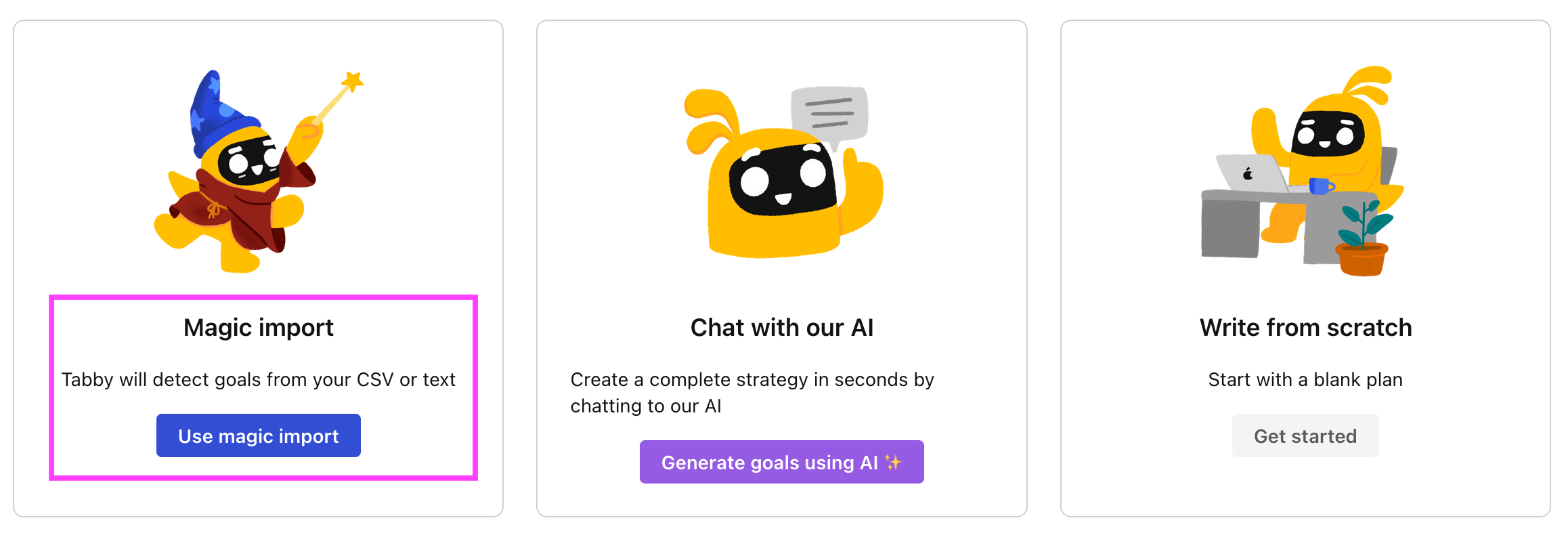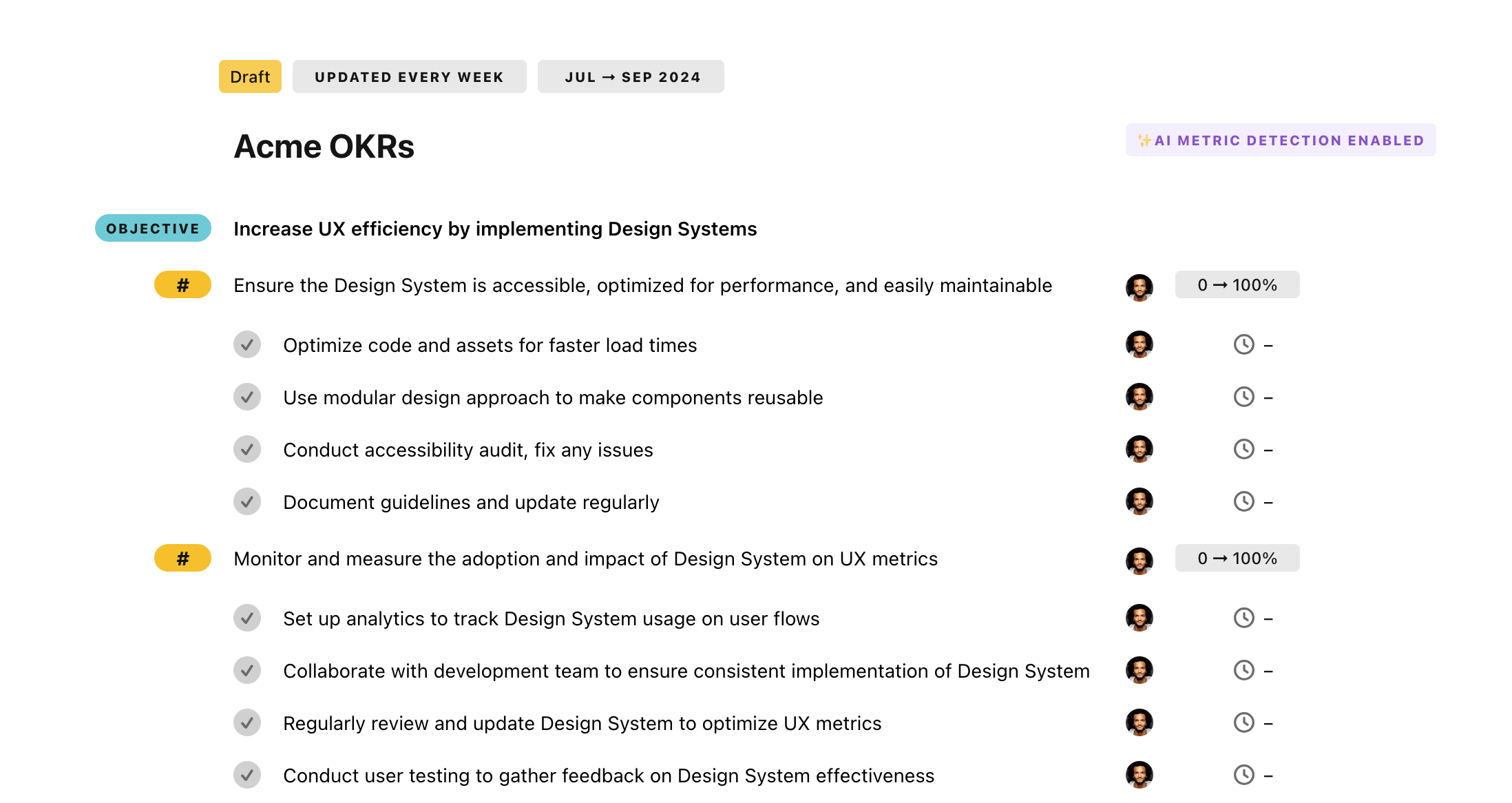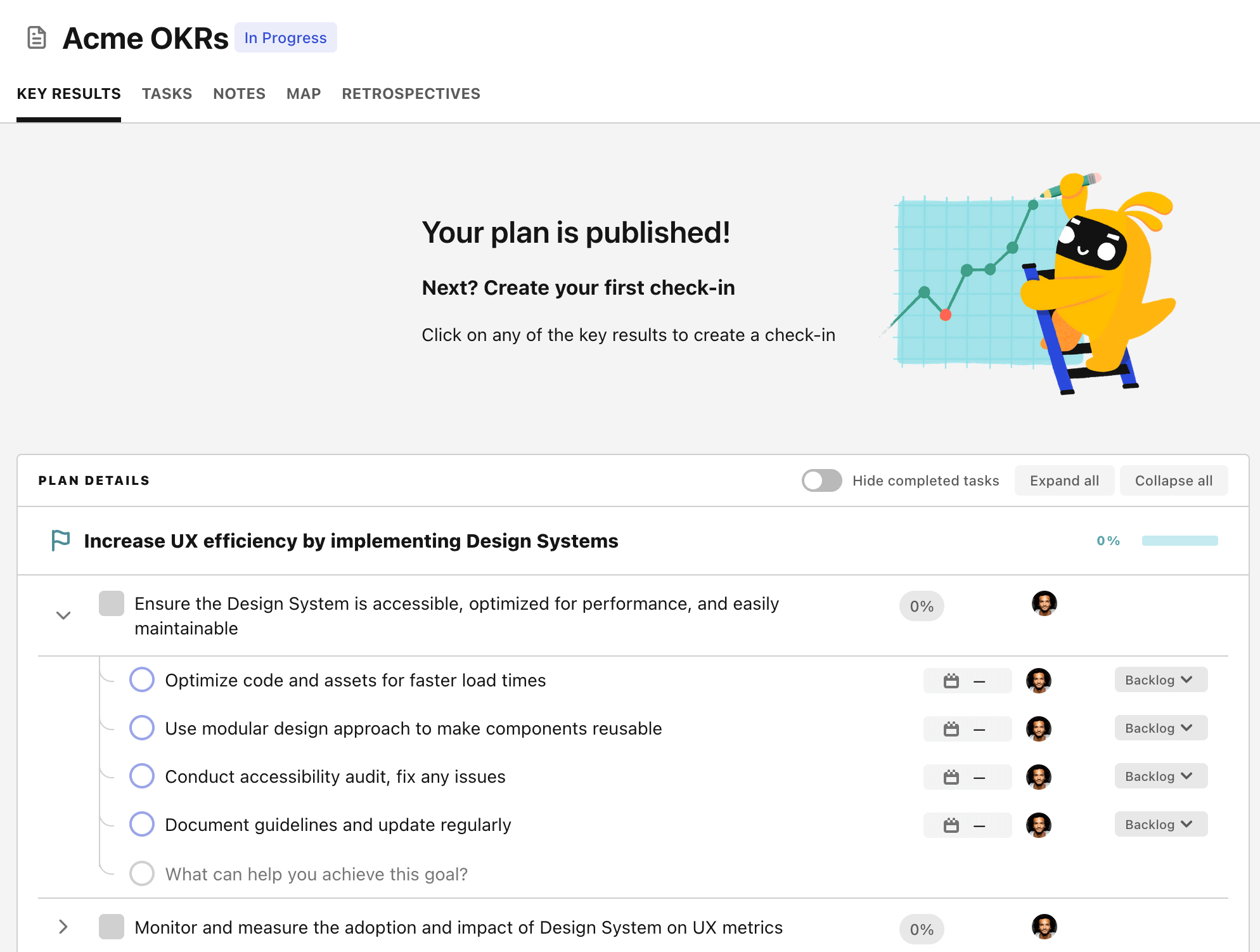OKR template to drive significant business growth through innovative design
Your OKR template
Another objective is to increase the conversion rate using improved website UX/UI. The initiatives for achieving this include conducting comprehensive user testing for the website's UX/UI, updating the design based on user feedback and implementing A/B testing for various design layouts.
The last outlined objective is to generate more leads by improving marketing collateral designs. The initiatives to attain this goal include testing different design variants to determine the most effective one, consulting design experts to upgrade the current collateral, and studying successful competitors for design inspiration.
By accomplishing these objectives via the outlined initiatives, the overarching key result - significant business growth - will be achieved through innovative design.
ObjectiveDrive significant business growth through innovative design
KRDecrease customer churn rate by 10% by improving product design
Monitor and analyze new customer churn rates
Implement design improvements based on customer feedback
Identify common complaints about current product design
KRIncrease our conversion rate by 15% through website UX/UI enhancements
Conduct comprehensive user testing for website UX/UI
Update website design based on user feedback
Implement A/B testing for different design layouts
KRGenerate 20% more leads through impactful marketing collateral designs
Test different design variants to identify best-performing
Consult design experts to enhance current collateral
Research successful competition for effective design inspiration
How to edit and track OKRs with Tability
You'll probably want to edit the examples in this post, and Tability is the perfect tool for it.
Tability is an AI-powered platform that helps teams set better goals, monitor execution, and get help to achieve their objectives faster.
With Tability you can:
- Use AI to draft a complete set of OKRs in seconds
- Connect your OKRs and team goals to your project
- Automate reporting with integrations and built-in dashboard
Instead of having to copy the content of the OKR examples in a doc or spreadsheet, you can use Tability’s magic importer to start using any of the examples in this page.
The import process can be done in seconds, allowing you to edit OKRs directly in a platform that knows how to manage and track goals.
Step 1. Sign up for a free Tability account
Go tohttps://tability.app/signup and create your account (it's free!)
Step 2. Create a plan
Follow the steps after your onboarding to create your first plan, you should get to a page that looks like the picture below.

Step 3. Use the magic importer
Click on Use magic import to open up the Magic Import modal.
Now, go back to the OKR examples, and click on Copy on the example that you’d like to use.

Paste the content in the text import section. Don’t worry about the formatting, Tability’s AI will be able to parse it!

Now, just click on Import from text and let the magic happen.

Once your example is in the plan editor, you will be able to:
- Edit the objectives, key results, and tasks
- Click on the target 0 → 100% to set better target
- Use the tips and the AI to refine your goals
Step 4. Publish your plan
Once you’re done editing, you can publish your plan to switch to the goal-tracking mode.

From there you will have access to all the features that will help you and your team save hours with OKR reporting.
- 10+ built-in dashboards to visualise progress on your goals
- Weekly reminders, data connectors, and smart notifications
- 9 views to map OKRs to strategic projects
- Strategy map to align teams at scale